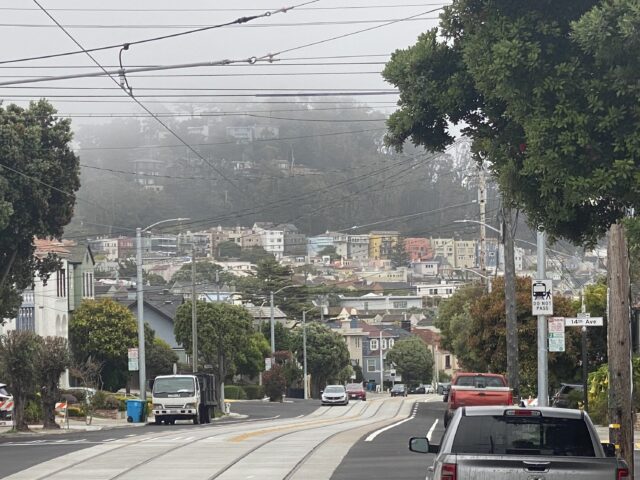New research has found that San Francisco is the worst place to be a real estate agent in the United States. According to Alyssa Evans, a public relation strategist with Clever Real Estate, San Francisco realtors face high competition, the fewest sales per agent in America, and the second-longest amount of time needed to afford a home — making it the country’s worst city for agents.
Now to be clear, some agents do well, and make a very good living. Referrals are a big part of the profession, and success breeds success. Top agents typically have a lot of business in the pipeline. But for most San Francisco agents, it can be tough.
Evans, referring to a recent Clever Real Estate study, said that the city is home to 104 real estate agents per 100,000 residents, and they make an annual salary of $65,190 — compared to agents in New York City, who make $103,960 annually, the highest salary among all metros studied.
Historically, a listing agent’s commission in San Francisco is 2.69%, which amounts to $31,950 on the typical home sale. The buyer’s agent commission is 2.41%, which is about $28,624 on the typical home sale in San Francisco according to Evans.
However, due to the high cost of real estate in San Francisco, it would take 18.2 years on the median real estate agent’s salary to afford the median-priced home in San Francisco. According to the study, that’s more than double the 7.7 years it would take for an agent to afford a home in the median U.S. city found elsewhere in the country.
Three other California cities are also among the bottom 10 worst places to be a real estate agent — San Jose (No. 3), Los Angeles (No. 9), and Riverside (No. 10).
Meanwhile, across the country, the news remains fairly bleak for homebuyers. Many housing economists predicted 2024 would see more relief for homebuyers by way of greater inventory and households more willing to sell their homes after being tethered to record-low mortgage rates obtained during the COVID-19 pandemic.
According to a report by Ashley Fahey with The Business Journals, while there has been some improvement on inventory, home prices continue to rise in many places, keeping people in their homes and limiting supply across the country.
Doug Duncan, Fannie Mae senior vice president and chief economist, said in a statement, “Unfortunately, we’re still not forecasting a ramp-up in housing activity, which will require some combination of continued household income growth, a further slowing of home-price appreciation, or a decline in mortgage rates to bring affordability within range of many waiting first-time and move-up homebuyers.”
According to Fahey, homes across America remained unaffordable for many prospective buyers in the second quarter of this year, with single-family home and condo prices less affordable during that three-month period compared to historical averages in 99% of the nation’s counties.
Don’t laugh, but San Francisco was one of just a few metros where homes were deemed actually more affordable. Still unaffordable for most, but more affordable for some.
To make matters worse, property taxes, insurance and other homeownership costs have climbed since the COVID-19 pandemic.
A recent Attom Data Solutions LLC analysis found that expenses for existing homeowners on median-priced homes are on the rise. Those costs consumed 35.1% of the average national wage in the second quarter, a high point since 2007 and significantly higher than the 28% lending guideline.
A Business Insider report said this is particularly painful for older Americans living on fixed incomes. The article said the crisis has become noticeably acute in Montana, as it has one of the oldest populations in the nation. But Montana isn’t alone. Older homeowners are struggling in communities across the country.
Is there a silver lining here? Maybe this: Federal Reserve Chair Jerome Powell said in mid-July that “more good data” could open the door to interest rate cuts.
The central bank left its benchmark interest rate unchanged at its June meeting, and penciled in only one rate cut in 2024 versus its previous forecast of three cuts this year, after digesting data showing inflation remains stubbornly high.
Speaking before a Senate Banking Committee hearing, Powell stressed that the central bank wants to see further progress in bringing the annual inflation rate to about 2% before cutting rates. But the chair also noted that the Fed is concerned with the risks of waiting too long to cut rates, noting that “elevated inflation is not the only risk we face.”
Many interpreted this to mean there may be a rate cut in September. We shall see.
Comments: [email protected]





